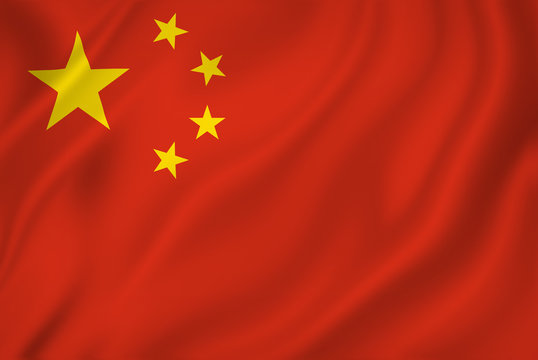São Tomé and Príncipe, the laid-back island nation in the Gulf of Guinea, stands on the brink of a major economic transformation. Cash has been king in the tiny African island nation of São Tomé and Príncipe, but efforts to modernise the country’s financial system are paving the way for a new age of digital payments. This maturation of the market, stimulated by government efforts, international assistance, and an increasing digital population, serves as a conducive nest for sound local payment solutions development in São Tomé. Whether you’re a business or a customer, navigating the possibilities for the dizzying payment landscape has never been more important.
We are in the beginning phases of the journey toward the digital economy. The banking sector in São Tomé and Príncipe has been stable but with limited penetration, especially in rural areas. FinTech follows: Increasingly, they are becoming white-label providers of financial services.
(Economies have for decades expected to be cash-based structures: According to Kathman, Hank, Jeff Pugh and Brian Quinn, "The Cash Divide" in Atlantic Magazine, May/June 1997.)
(What are the roots of the term FinTech? That’s what the famed ABSs are picking up from the financial markets in today’s boom time — possibly the author’s view — for such structured paper.)
But the times they are a-changin''' and money is being invested to overhaul the country's payment system. The World Bank and the African Development Bank are cooperating to implement RTGS (Real Time Gross Settlement) and ACH (Automated Clearing House). These are basic but essential improvements – a more reliable and speedier connecting tissue for any kind of electronic transaction, and a very important step in strengthening confidence in online payment in São Tomé and Príncipe.
The Way We Pay Now: Old and New Mix It Up
In the interim, cash is still king for most Santomeans. But there are digital alternatives out there. The commercial banks, including regional players such as Ecobank, are rolling out their services gradually. Local debit cards exist but have had limited use for international transactions — something that the planned payment system upgrades seek to address by connecting to international networks, including Visa and Mastercard.
One interesting thing about the current digital payments landscape is the heavy emphasis on international money transfer services. Companies like MoneyGram, Western Union, and thousands of online services enable the movement of money into the country, suggesting there is a real demand for cross-border financial services. These services, however, frequently conclude with cash pickups, leaving a gap between international digital transfers and a fully digital local payment ecosystem.
The world of payments in São Tomé is young and developing. With an internet penetration of 57%+ and mobile cellular subscriptions covering close to 72% of its population (as of early 2024), the nation’s digital appetite cannot be ignored. The main concern for online businesses is figuring out how to accept payments in São Tomé and Príncipe. Right now, options are limited. For example, platforms like Wix paired with PayPal as an international gateway are often the easiest solution for merchants. This dependence on third-party providers highlights the need for secure, locally adapted payment systems in São Tomé.
The Dawn of Mobile and the Fintech Horizon
In Africa, mobile money has revolutionised financial inclusion. While São Tomé and Príncipe don’t yet have a dominant mobile money operator like M-Pesa, the opportunity is huge. The widespread use of mobile phones provides a natural springboard for digital payment adoption. Pan-African banks are beginning to roll out mobile banking apps, which may drive digital wallet usage in São Tomé.
These wallets, offering safe and efficient mechanisms for storing and spending money, might lead to greater adoption than traditional banking among much of the population.
The fintech environment in São Tomé and Príncipe is still emerging. While international neobanks and crypto exchanges are accessible, homegrown startups are rare. However, forward-thinking government programs—such as the pilot of a national digital ID system based on the MOSIP framework—are laying the groundwork for innovation. A strong digital identity system is critical to building a secure digital economy and will support fintech innovation and financial inclusion through digital payments in São Tomé.
Also read: Mapping the Stablecoin Stack: Infrastructure, Yields, and the New Digital Dollar Economy
For Companies Interested in Entering the Santomean Market
Changes on the payment horizon bring both challenges and opportunities. Most importantly, businesses must adopt flexible and adaptable strategies to align with the evolving financial ecosystem.
This is where robust global payment solutions can make a difference. A product like Transfi.com can help businesses understand and navigate the new landscape. A reliable payment gateway should offer:
- Multiple payment solutions under one integration
- Compatibility with current payment trends
- Easy adoption of card payments and digital wallets
- Secure, seamless cross-border transactions
Such a gateway helps businesses provide new payment methods to local customers and optimise money movement between countries.
The Future: Challenges and Opportunities
The road to a fully digital payment system isn’t without obstacles. These include:
- The need for infrastructure investment
- Enhancing digital literacy among citizens
- Creating a regulatory framework that fosters innovation while protecting consumers
Localised, context-specific solutions designed for Santomean users will be essential for achieving widespread digital payment adoption.
That said, the opportunities are substantial. Tourism, a pillar of São Tomé’s economy, will benefit significantly from frictionless digital payments. The growth of e-commerce will be enabled by the availability of secure online transactions. Moreover, expanding financial inclusion through digital means will foster greater economic participation for everyone.
Conclusion
SÃO TOMÉ — The small island nation is at a critical turning point in its financial history. The shift from a cash-based society to a digitally driven economy is already underway. Though it's still a work in progress, important foundations — from infrastructure investments to a national digital ID — are being laid.
For companies and investors, the challenge lies in understanding this emerging market and aligning with top local payment processors who can match the nation’s pace of change. The future of payments in São Tomé and Príncipe is not just digital — it is inclusive, empowering, and filled with economic potential.
Frequently Asked Questions (FAQs)
- What form of payment is most popular in São Tomé and Príncipe?
- The most widely used means of payment in daily transactions is cash. However, there is growing usage of debit cards issued by local banks at point-of-sale terminals. For international remittances, MoneyGram and Western Union are commonly used.
- Can I get Mobile Money in São Tomé and Príncipe?
- São Tomé and Príncipe does not yet have a dominant local mobile money provider. However, mobile banking apps from Pan-African banks are entering the market. Given high mobile phone penetration, mobile money usage is expected to grow shortly.
- How can an online business accept payments in São Tomé and Príncipe?
- Currently, online businesses rely on international gateways. For instance, PayPal is available and can be integrated into e-commerce platforms like Wix. As the country’s infrastructure improves, localised payment solutions will likely become more accessible.
- How is the fintech industry in São Tomé and Príncipe?
- The fintech sector is nascent. Few homegrown startups exist, but access to international fintech services such as neobanks and crypto exchanges is available. Government-led initiatives like a digital ID system are helping create a foundation for local fintech innovation.
- In what way is the government encouraging the use of digital payments?
- The government is actively working with international partners, including the World Bank and the African Development Bank, to modernise the financial system. This includes implementing RTGS, ACH, and a national digital identity system to encourage secure, inclusive digital transactions.
Table of Contents
Suggested Article
Explore our products

Make global payments at the speed of a click

Accept payments, remove borders.

Unlock Seamless Digital Currency Transactions Anywhere









.png)














